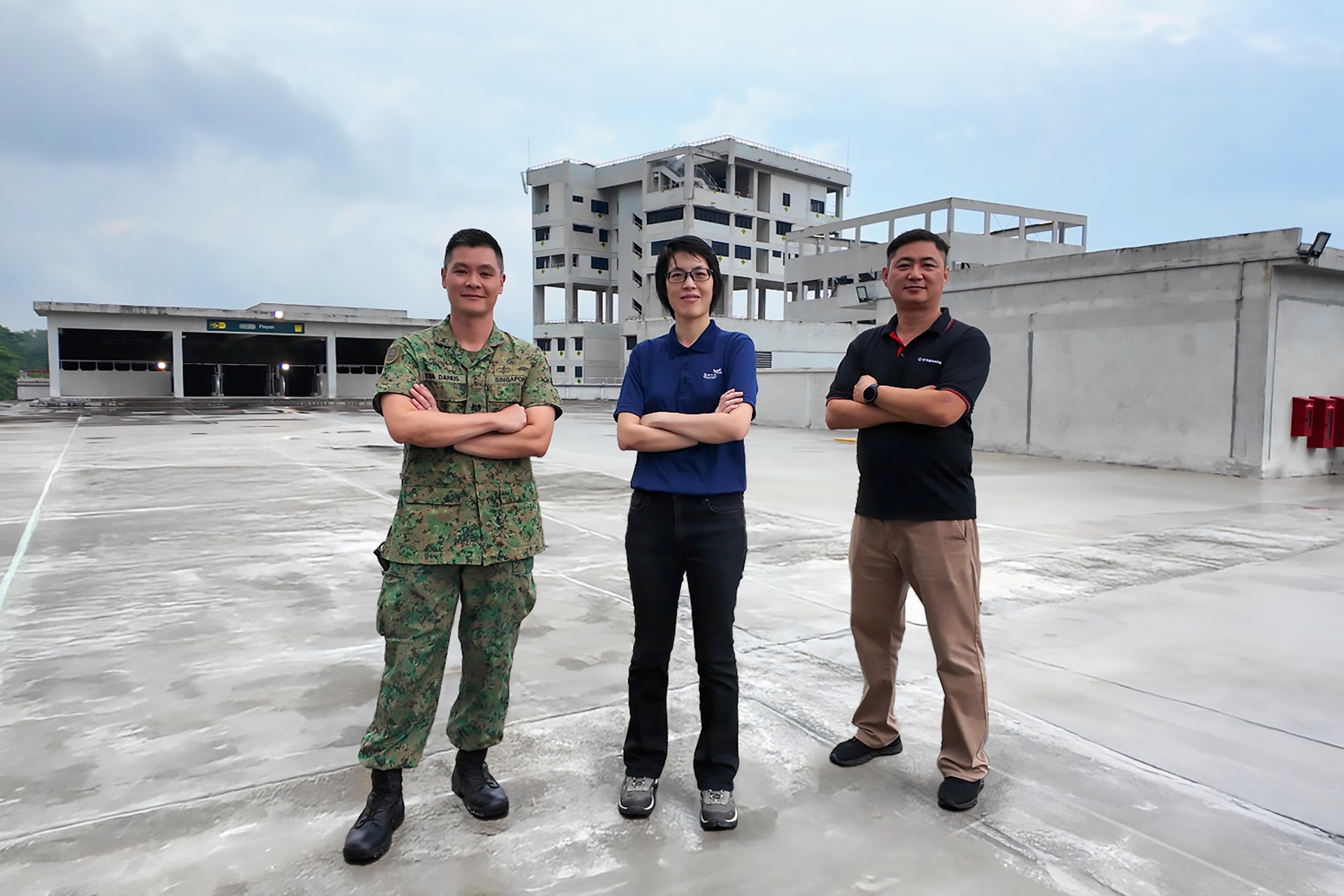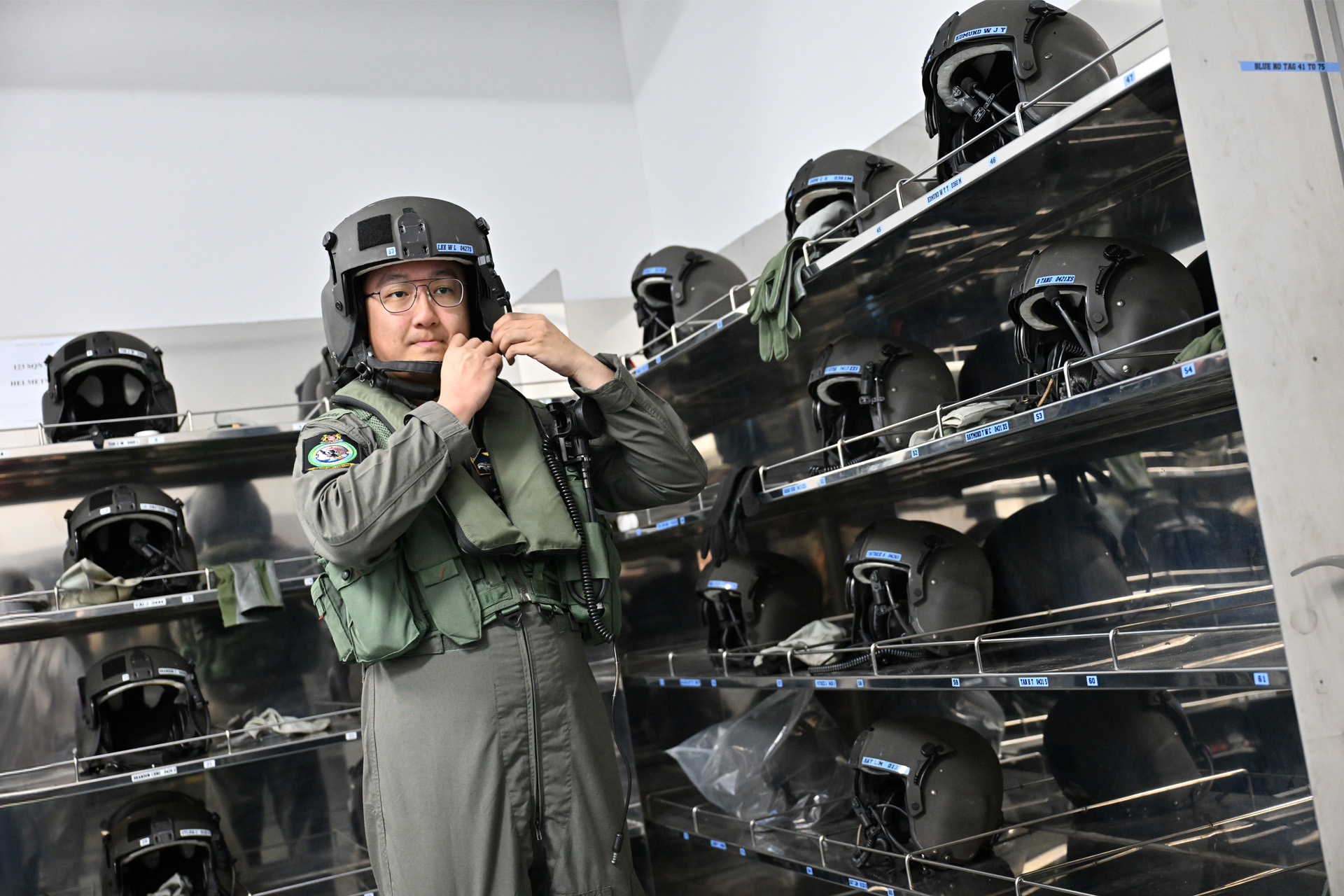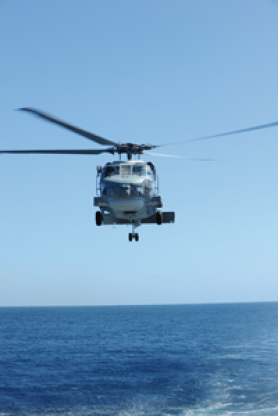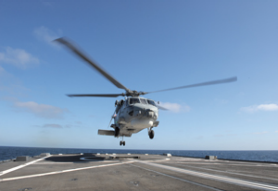TECHNOLOGY
WATCHING OVER SKIES & SEAS
27 May 2010

The addition of Sikorsky S-70B Seahawk naval helicopters to the Republic of Singapore Navy's (RSN's) Formidable-class stealth frigates will bring more effective air and sea power and further boost maritime security.
Dominance over a greater area of sea and airspace surrounding its parent ship - the edge which naval helicopters bring to warships - is undoubtedly a valuable asset to navies worldwide. With its latest addition, the Sikorsky S-70B Seahawk helicopter, the Republic of Singapore Navy (RSN) is able to do just that as it taps on the helicopter's anti-surface and anti-submarine capabilities.
"This will be a new capability for the Singapore Armed Forces and will greatly boost the war-fighting capabilities of our navy, enabling us to have a more decisive advantage at sea," said Colonel (COL) Wellman Wan, Commander 1st Flotilla.
With a top speed of 140 knots (260kmh), the S-70B offers a speedy reaction to threats as it can move five times as fast as a frigate.
"The mobility and speed by which the naval helicopter can be sent out to scan for and verify enemy threats provide us with a greater tactical advantage."
"For example, the frigate can deploy its naval helicopter to verify an enemy threat detected by a Maritime Patrol Aircraft (MPA), leaving the MPA free to scan other areas for possible threats," explained COL Wan.
Hawk-eyed
Acquired primarily to complement the frigates' anti-submarine and anti-surface warfare roles, the S-70B is the airborne "eye" of its parent ship. The S-70B s ability to detect underwater threats comes from a dipping sonar system - the L3 Helicopter Long Range Active Sonar (HELRAS). Able to detect and track underwater targets, it is operational up to depths of 500m.
The sonar consists of a submersible unit, a reeling machine and a series of processors and display units. The submersible unit comprises a transmitting array of seven projector elements and a receiving array of eight hydraulically-driven arms which expand to a diameter of up to 2.6m when unfurled. This folding design enhances the performance of the sonar in both deep and shallow waters.
Utilising advanced Doppler sonar signal processing techniques, the dipping sonar system is able to detect small objects moving at slow speeds.
In the air, the S-70B relies on a maritime surveillance and tracking radar belonging to the OceanEye family of radar systems. Consisting of three components - a transmitter, a receiver and a signal processing unit - the APS 143 Surveillance Radar is operated via a dedicated panel with on-screen controls by a Tactical Coordination Officer (TACCO) within the helicopter. Part of the radar system is visible on the exterior of the S-70B Seahawk, appearing as a flat disc on the fore underbelly of the naval helicopter.
The S-70B is also fitted with other sensors and sense-making tools, such as the Raytheon AAS-44 Electro-Optical Sensor System, which put a fully-developed array of detection technologies at the operators' disposal. Integrated communications systems on board link the helicopter to its parent ship and other friendly forces in its operational environment, creating a seamless detect-and-report loop.
Hardy hawk
Like the Black Hawk Helicopter (the S-70 medium transport/utility helicopter), most famously used by the United States Marines, the S-70B incorporates many features designed to improve crew safety and battlefield survivability.
Redundant systems are aplenty on board the naval helicopter to ensure that the S-70B remains in the air even during emergencies.
As the S-70B will operate in a maritime environment and it is expected to take off and land on warships at sea, its landing gears have been designed to absorb energy. This minimises the impact transmitted to the helicopter when landing on warships traversing choppy waters.
In 2005, the Singapore Ministry of Defence signed a contract with Sikorsky Aircraft Corporation to acquire six S-70Bs.
Each S-70B is operated by a crew of four - comprising two pilots from the Republic of Singapore Air Force (RSAF), a Sensor Operator (SENSO) and a TACCO from the RSN. The SENSO operates the sonar while the TACCO monitors the radar systems to provide input for tactical manoeuvring.
To achieve the high level of integration required between the two services to operate the helicopters effectively, 60 RSAF and RSN personnel have been training at the Naval Air Station North Island in San Diego since November 2009.
The RSN has taken delivery of three out of the six naval helicopters, with the first of them due back in Singapore by June 2010.
ALSO READ IN TECHNOLOGY

AI joins the fight in national cyber defence exercise
12 Nov 2025
AI and closer collaboration among agencies and industry are taking centre stage in this year’s Critical Infrastructure Defence Exercise (CIDeX).

They built this city
01 Oct 2025
Turning vision to reality: the team behind SAFTI City clinches the Defence Technology Prize 2025 Team (Engineering) Award!

Operating over skies & seas
22 Aug 2025
This gear is designed to help a Sensor Supervisor survive emergencies in the air and at sea.





